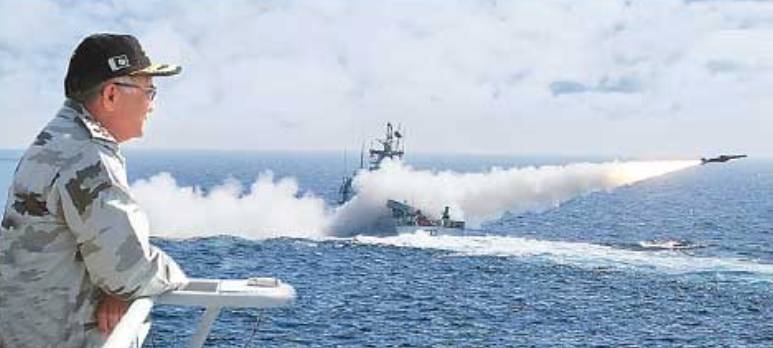KARACHI – Pakistan Navy added another feather to its cap after it test fired endogenously developed Harbah Naval Cruise Missile from PNS Himmat in Arabian sea last week, leaving rivals in awe.
Though Pakistan Navy and Inter-Services Public Relations (ISPR) did not share the missile’s payload capabilities, some observers, according to Defence.pk, are of view that “this system has a dual operational capability of striking sea & land targets with a range greater than American Harpoon Missile”.
Another Indian defence analyst, Ankit Panda in his article said, “The Harbah is thought to be derived from Pakistan’s Babur family of cruise missiles”. He added that Harba’s “origin in the Babur family would suggest that it could be converted for both conventional and nuclear payload delivery”.
Last week, Pakistan Navy demonstrated its ability to respond to any aggression by conducting a test fire of a cruise missile from its recently commissioned PNS Himmat in Arabian sea near Karachi.
The Fast Attack Craft (Missile) PNS HIMMAT, built at Karachi Shipyard & Engineering Works Limited (KS&EW), was commissioned at Pakistan Navy Dockyard Karachi last year in July. PNS HIMMAT is a 63 meters long Fast Attack Craft fitted with state of the art weapons and sensor.
The naval craft fired indigenously developed Harbah Naval Cruise Missile, which is a Surface to Surface anti-ship missile with Land Attack capability. The missile accurately hit its target signifying the impressive capabilities of Harbah Naval Weapon System.
#Pakistan Navy conducted successful firing of Harbah #Naval #Cruise Missile. @arifreporter @khalid_pk @PakistanNavy @NavyRecognition @DefenderPak pic.twitter.com/Qw8kTrpaiz
— BEEN (@Been070) January 3, 2018
According to US Navy, the A/U/RGM-84 Harpoon is an all- weather, over-the-horizon, anti-ship missile system that provides the American Navy with a common missile for air and ship launches.
Features
The Harpoon is active radar guidance, warhead design, low-level cruise trajectory, and terminal mode sea-skim or pop-up maneuvers assure high survivability and effectiveness.
The missile is capable of being launched from surface ships, submarines, shore batteries, or aircraft (without the booster).
In late 2010, plans for an updated US Navy version of the Harpoon Block II began to formalize. The Harpoon Block II+ provides a rapid-capability enhancement for the Navy that includes a new GPS guidance kit, reliability and survivability of the weapon, a new data link interface that enables in-flight updates, improved target selectivity, an abort option and enhanced resistance to electronic countermeasures.
When fielded to the fleet in the fourth quarter of Fiscal Year 2017, Harpoon Block II+ will join the Joint Standoff Weapon C-1 as the Navy is only two air-to-ground network-enabled weapons.














